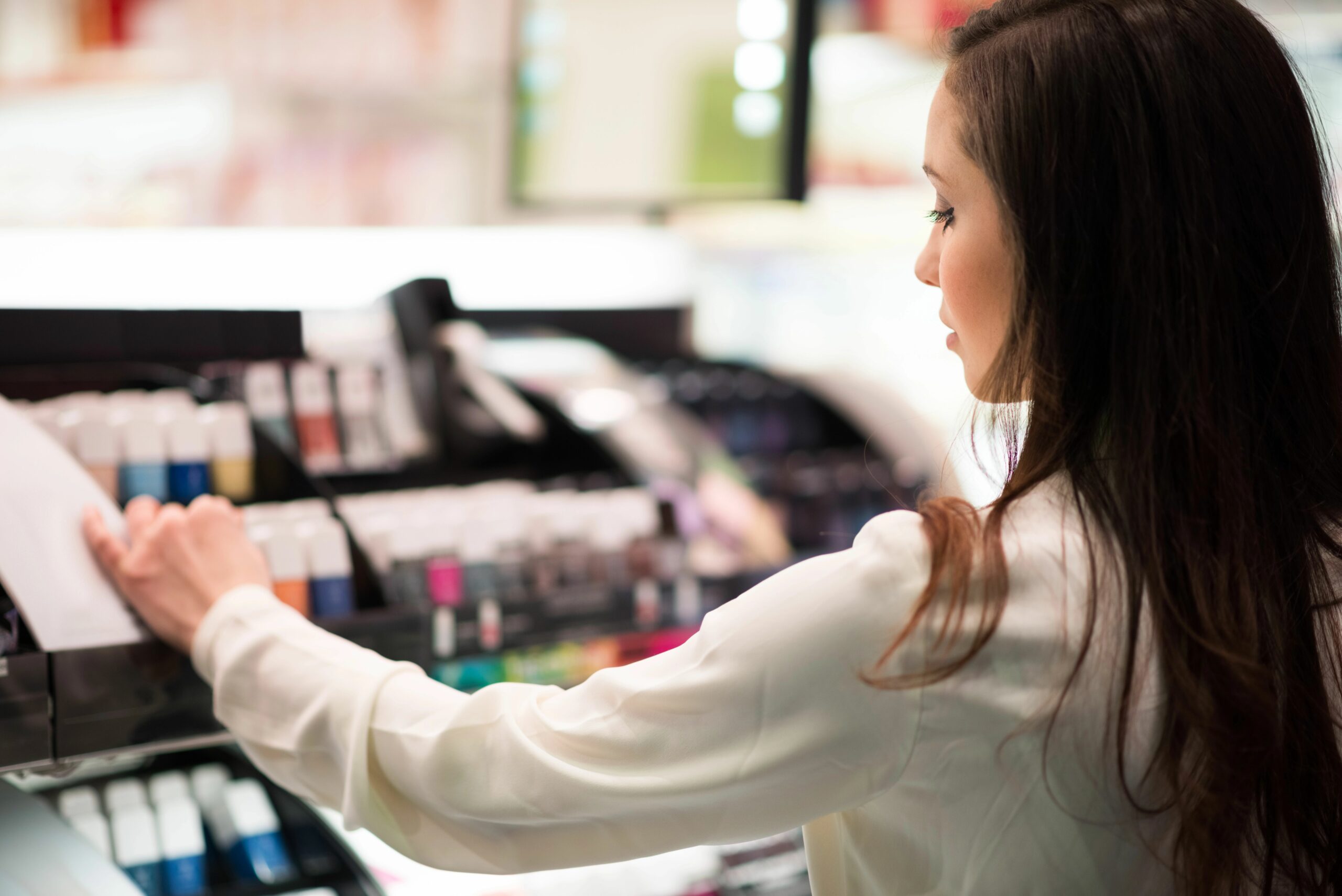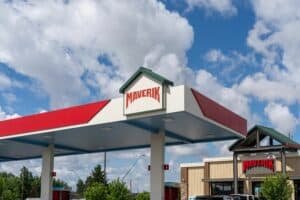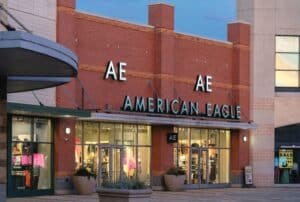
Minervastock/Depositphotos.com
June 11, 2025
What’s Next for the In-Store Beauty Experience?
With online platforms from TikTok Shop to Amazon to SHEIN increasingly driving beauty discovery and offering convenience, the in-store beauty experience may need a revamp.
A recent survey of over 1,600 U.S. beauty shoppers from ChangeUp, a design agency, found 69% think beauty product shopping is overwhelming, pointing to an opportunity for better curation at the store level. Almost half think beauty trends change so quickly, and physical retail hasn’t caught up, while 63% wish beauty stores were about more than just buying products.
ChangeUp said with beauty shoppers still preferring to make final purchase decisions in-store, beauty shops should prioritize education, community, content creation, and personalization to serve multiple shopper profiles. ChangeUp said, “For brands looking to thrive in this new landscape: physical spaces must shift from transaction-focused to experience-rich destinations that don’t overwhelm shoppers. This must complement digital while providing unique value impossible to replicate online.”
NielsenIQ’s “Global Beauty Edit” study also found the increased use of theft prevention measures (e.g. locked shelves) as a newer turnoff to in-store beauty shopping. The consultancy found e-commerce has grown to account for 41% of all beauty and personal care sales in the U.S., led by Amazon and TikTok-driven social commerce.
“In-store retail is far from obsolete. Shoppers value tactile experiences and personalized consultations, particularly for high-investment products like skincare,” stated NielsenIQ. “Retailers must balance convenience with customer satisfaction. Investing in hybrid models—seamlessly integrating online discovery with in-store experience—will be critical.”
In-Store Retail Remains Strong in Beauty, Particularly Given Opportunities To Trial Products and Increase Tech Integration
A survey of 1,000 beauty shoppers last year from Outform, a retail marketing agency, found two-thirds are inspired when shopping in-store, yet 39% feel there’s not enough guidance or education around products. More than half (54%) of the respondents from the UK, U.S., France, and Germany cited improved opportunities to trial and test products as the change they would most like to see at beauty stores.
Outform’s survey respondents cited technology as important to access while shopping in-store for beauty with 83% expecting digital screens to help product exploration in-store and 72% open to scanning a QR code and share personal data to obtain a product trial.
“The arrival of AI-driven beauty tools is about to open up a whole new world of personalization for shoppers and drive the demand for discovery and understanding to ever greater heights,” said Clare Cryer, VP of Growth at Outform. “In-store shopper experiences are going to become even more central to communicating the sector’s innovations and crucial for ensuring shoppers can navigate their way through any potential confusion.”
Discussion Questions
How may beauty retailing have to be re-imagined with online increasingly dominating the discovery phase?
Do you see any specific changes for prestige versus mass channels?
Poll
BrainTrust
Lisa Goller
B2B Content Strategist
Georganne Bender
Principal, KIZER & BENDER Speaking
Neil Saunders
Managing Director, GlobalData
Recent Discussions







From our data, one of the big reasons consumers visit beauty stores is for discovery. They want to find new products and solutions and are very open to trying new things. That necessitates newness, both from established brands and from retailers showcasing new brands. Being able to test, discuss, and find out about new products is also important, which underscores the need for great customer service and displays that educate. Sephora and Ulta do these things pretty well, which is why both have taken market share. There’s also an opportunity to add beauty services in appropriate locations.
The customer beauty experience isn’t about AI screens and QR codes, it’s about knowledgable store associates who know what the customer standing in front of them needs.
Moving brick and mortar from “transaction-focused to experience-rich destinations” IS important, so let’s stop talking about it and actually do it. Beauty shopping is overwhelming and it takes true talent to help a customer feel beautiful. And the woman I asked at Ulta about eyeliner who said, “You’re beyond eyeliner, it’s time for an eye lift” ain’t it.
I completely agree. There is plenty of room for good, solid retail without the need to resort to flashy ‘experiences’ that are completely irrelevant to the customer. Do people go to Sephora because of the technology, or because there is a great range, very helpful associates, and a nice shopping experience? Hint: it’s the latter things!
The question brick and mortar beauty retailers need to answer is, “What problem are we solving?” Do shoppers need technology to augment a lower quality in store experience due to poorly trained or too few associates? Or are some shoppers using technology to improve the in-store experience? Solve the right problem.
Reimagining beauty retailing will involve smashing the silos among physical stores, e-commerce and social.
Viral #GetReadyWithMe videos and trusted creators are driving discovery and growth in beauty. Brick and mortar retailers could partner with these creators and trending brands to ensure what viewers see online is available in stores near them for certainty that sells.
Similarly, e-commerce is spectacular for repeat purchases but real-life trial in stores can secure the sale. Online sellers can earn shoppers’ confidence by partnering with brick and mortar retailers. Cross-channel collaboration would lift the beauty category.
The beauty “experience” at retail remains the differentiator for the category. As our work across this segment in the areas of fixture management and assortment strategies continues to accelerate, I am encouraged by the innovation, fixture options, and incorporation of technology at shelf. Managing the physical space within brick-and-mortar (including shelf placement, fixture coordination, lighting, signage, and technology) applies to both the prestige and mass channels. Shoppers are seeking convenience, organization, discovery, and a seamless omnichannel experience.
Winning beauty retailers are transforming the way we view shopping. They’re moving from discovery to building trust and confidence. That’s confidence that a shade matches or that an ingredient won’t cause a breakout, or a scent won’t clash with your chemistry. The physical store becomes crucial in validating digital discovery through human expertise enhanced with helpful in-store technologies. Any category with high-sensory elements will need to evolve as digital discovery becomes dominant.
Hard to know exactly what that lipstick is going to look like without putting it on. I suspect the share taken by online retailers is of the lower end variety, with price points low enough to warrant taking a chance on something without really knowing how you are going to like it, or if you are going to like it…
The future of in-store beauty experiences lies in transforming from mere transaction-driven spaces to immersive, educational hubs. We have seen Shoppers are increasingly finding online platforms convenient for discovery, but the physical stores remain still preferred for final purchases due to tactile experiences and personalized consultations. Technology integration is key. And building communities through education, content creation, and personalization will serve a variety of shopper profiles. Balancing the convenience of e-commerce with the unique value propositions of brick-and-mortar stores, such as product trials, will be pivotal. Thus, hybrid models that seamlessly blend online discovery with in-store experiences are set to thrive.